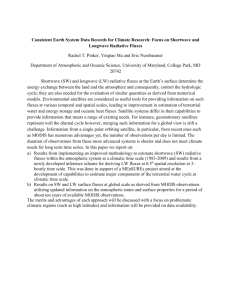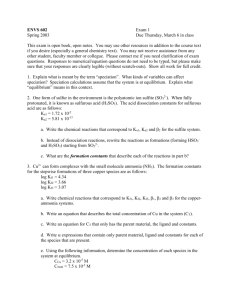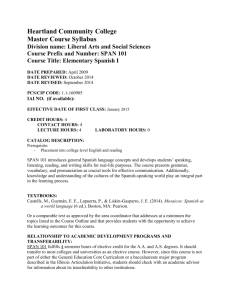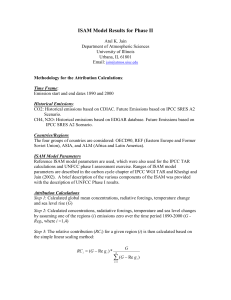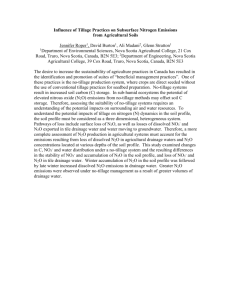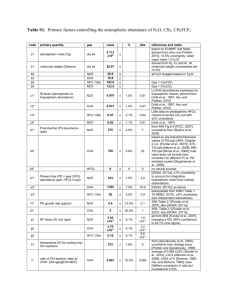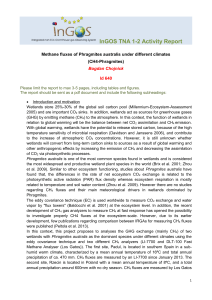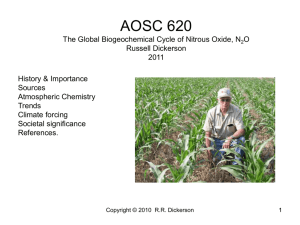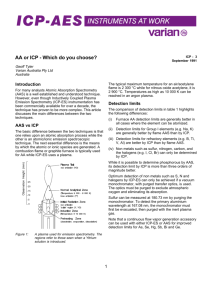N2O and CH4 fluxes in a temperate heathland under future climatic
advertisement
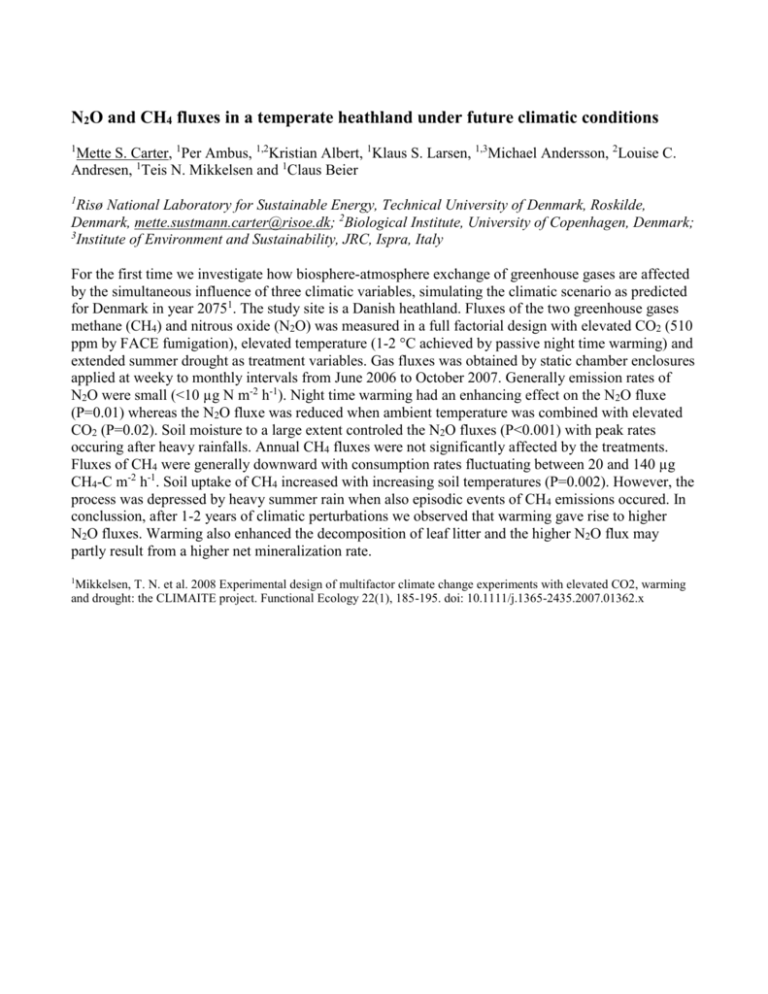
N2O and CH4 fluxes in a temperate heathland under future climatic conditions 1 Mette S. Carter, 1Per Ambus, 1,2Kristian Albert, 1Klaus S. Larsen, 1,3Michael Andersson, 2Louise C. Andresen, 1Teis N. Mikkelsen and 1Claus Beier 1 Risø National Laboratory for Sustainable Energy, Technical University of Denmark, Roskilde, Denmark, mette.sustmann.carter@risoe.dk; 2Biological Institute, University of Copenhagen, Denmark; 3 Institute of Environment and Sustainability, JRC, Ispra, Italy For the first time we investigate how biosphere-atmosphere exchange of greenhouse gases are affected by the simultaneous influence of three climatic variables, simulating the climatic scenario as predicted for Denmark in year 20751. The study site is a Danish heathland. Fluxes of the two greenhouse gases methane (CH4) and nitrous oxide (N2O) was measured in a full factorial design with elevated CO2 (510 ppm by FACE fumigation), elevated temperature (1-2 °C achieved by passive night time warming) and extended summer drought as treatment variables. Gas fluxes was obtained by static chamber enclosures applied at weeky to monthly intervals from June 2006 to October 2007. Generally emission rates of N2O were small (<10 µg N m-2 h-1). Night time warming had an enhancing effect on the N2O fluxe (P=0.01) whereas the N2O fluxe was reduced when ambient temperature was combined with elevated CO2 (P=0.02). Soil moisture to a large extent controled the N2O fluxes (P<0.001) with peak rates occuring after heavy rainfalls. Annual CH4 fluxes were not significantly affected by the treatments. Fluxes of CH4 were generally downward with consumption rates fluctuating between 20 and 140 µg CH4-C m-2 h-1. Soil uptake of CH4 increased with increasing soil temperatures (P=0.002). However, the process was depressed by heavy summer rain when also episodic events of CH4 emissions occured. In conclussion, after 1-2 years of climatic perturbations we observed that warming gave rise to higher N2O fluxes. Warming also enhanced the decomposition of leaf litter and the higher N2O flux may partly result from a higher net mineralization rate. 1 Mikkelsen, T. N. et al. 2008 Experimental design of multifactor climate change experiments with elevated CO2, warming and drought: the CLIMAITE project. Functional Ecology 22(1), 185-195. doi: 10.1111/j.1365-2435.2007.01362.x
